The allure of the largest alligator gar
Why the largest alligator gars fascinate anglers
When it comes to freshwater fishing, the allure of the largest alligator gar is undeniable. These massive creatures, scientifically known as Atractosteus spatula, can grow to sizes that seem almost mythical. Renowned for their sharp teeth and armored scales, alligator gars have been a subject of both fascination and fear for years.
The historical record of the largest alligator gar was set by Bill Valverde in 1951 when he caught a 279-pound gar in the Rio Grande. This record gar caught the attention of anglers nationwide, making it a milestone that's still discussed today. According to the International Game Fish Association (IGFA), these giants have been recorded reaching lengths of up to 10 feet.
The largest alligator gars draw attention for several reasons. Firstly, they are among the largest freshwater fish in North America, capable of growing over eight feet long and weighing more than 300 pounds. Their prehistoric appearance, complemented by their massive size and sharp teeth, makes them a subject of both awe and caution.
Angler Kirk Kirkland of Houston, Texas, is a notable expert in this field. He claims that his passion for gars stems from their challenging nature. Kirkland has landed several massive alligator gars in the Trinity River, a hotbed for these goliaths. 'It's not just about the size; it's about the experience and the fight they put up,' Kirkland mentioned in an interview with the Texas Parks and Wildlife Department.
With records like the one set by Art Weston in Kentucky, when he caught a 96-inch long alligator gar, the race to catch the next largest gar continues to captivate anglers. The mystery of the river and the prospect of landing such a unique species bring both thrill and a sense of achievement. Plus, the stories behind these catches often become fishing lore, adding to the mystique of the largest alligator gars.
Record-breaking alligator gar catches
Massive gar caught by John Paul Morris
In May 2019, John Paul Morris, an avid bow fisherman, made headlines with his record-breaking 261-pound alligator gar caught in southeast Texas. This incredible catch was documented by the International Game Fish Association (IGFA), making it one of the most significant catches in recent years. Morris's achievement took place in the Trinity River, a famous hotspot for this species.
The Trinity River is known for its mighty gars, and Morris's catch was no exception. Utilizing a heavy-duty rod and reel setup with a 130-pound test line, he managed to reel in this colossal fish, showcasing the importance of using the right equipment when targeting such large aquatic behemoths.
Art Weston's iconic catch
An even more astounding catch occurred in 1951, when Bill Valverde landed a 279-pound alligator gar in Rio Grande, Texas. This historic event remained a record for a long time, painting a vivid picture of the enormous size alligator gars can achieve. Valverde's story continues to inspire modern anglers who aspire to break new records while demonstrating patience and skill. The details of Valverde's catch have been preserved in various fishing logs and reports, cementing its place in fishing history.
Another notable figure in the alligator gar fishing community is Art Weston. Weston, renowned for his expertise in gar fishing, captured an alligator gar weighing over 200 pounds in Lake Chotard, Mississippi. His triumphant catch reflected his exceptional knowledge of the species, coupled with precise fishing techniques.
The legendary Kirk Kirkland
Yet another giant was snagged by Kirk Kirkland, who is widely considered one of the top gar anglers in the world. Kirkland, known for his expeditions along the Trinity River, caught several massive alligator gars, with his largest being 244 pounds. His experiences and techniques are often shared within the fishing community, offering valuable insights into the best practices for catching these massive freshwater giants.
Throughout the years, angling enthusiasts have continued to push the limits, striving to catch larger and larger specimens. These record-breaking gar catches are not just feats of strength and endurance but also celebrations of the unique and thrilling challenge posed by the largest freshwater fish in North America.
Top fishing spots for alligator gar in Texas
Legendary alligator gar fishing in sam rayburn reservoir
When it comes to snagging a massive alligator gar, Sam Rayburn Reservoir in Texas isn't just famous, it's downright legendary. Located in Southeast Texas, this freshwater haven has seen some giants pulled from its waters. Remember the name Bill Valverde? Back in the day, he pulled in a 279-pound alligator gar from these very waters. That beast still holds a massive historical weight record.
The trinity river: land of giants
Another gem for gar enthusiasts is the Trinity River. Flowing through Texas, this river is renowned for its large alligator gars. Anglers like Kirk Kirkland have made names for themselves here, often documenting epic battles with five-foot-plus beasts. Kirkland's 302-pound alligator gar remains legendary, forever etched in the annals of fishing lore.
Top spots along the Rio Grande
If you’re chasing the thrill of reeling in a freshwater giant, the Rio Grande should definitely be on your list. Winding its way along the Texas-Mexico border, this river has been home to some hefty catches over the years. Stories of 200-pound gar snagged near Lake Chotard echo in local legend, and experienced anglers claim it's one of the best places to test your tackle.
Other hot spots in the lone star state
Texas is a big place and offers a plethora of spots perfect for gar fishing. Southeast Texas, particularly around Houston, has slew of locales known for producing trophy catches. Anglers often find success in the waters of the Sam Rayburn Lake area and the nearby reservoirs. The Texas Parks and Wildlife department continually works to maintain the habitats suitable for these giants, ensuring that Texas remains a hotbed for record-breaking catches.
For those who prefer exploring lesser-known spots, smaller rivers and lakes are also worth trying. With the right techniques and a touch of luck, you might land an impressive catch in unexpected places.
Expert techniques for catching alligator gar
Rigging your gear for success
To catch an alligator gar, you'll need the right tackle. A sturdy rod and reel combo, designed to handle a 100-pound test line, is essential. Kirk Kirkland, a renowned guide from Trinity River, emphasizes the importance of using heavy-duty gear, "You don't want to be under-equipped when you hook into a massive alligator gar." IGFA records show that many alligator gars caught exceed 200 pounds, making durable gear crucial.Choosing the right bait
Gars are opportunistic feeders. They often hunt a variety of prey, including fish and small mammals. Popular baits include mullets, shad, and even small live fish. Bill Valverde, who held the world record gar in the 1950s, famously used cut carp to lure his prize catch. Using a combination of live and cut bait can increase your chances, as alligator gars have a keen sense of smell and are attracted to the scent of fresh bait.Mastering the technique
Patience is key. Alligator gars often toy with bait before fully committing. Texas fisherman Art Weston suggests waiting until you feel a steady pull before setting the hook. This allows the gar to take the bait deeper, increasing your chances of a secure hook set. According to TPWD, successful anglers often let the gar swim with the bait for a while before reeling in.Where to cast your line
Alligator gars are most commonly found in large river systems, lakes, and reservoirs. Southeast Texas spots like the Trinity River and Sam Rayburn Reservoir have produced record catches. For instance, the largest alligator gar ever recorded in Sam Rayburn Reservoir weighed in at over 200 pounds. Select shallow waters and areas with ample cover such as fallen trees where gars tend to ambush their prey.Time of the year
Fishing for alligator gars can be rewarding year-round, but spring and early summer are peak times. As the water warms, gars become more active and are more likely to feed. Research from the Texas Parks & Wildlife Department indicates the spawning season, typically late spring, sees increased gar activity. To read about record-breaking catches, check out this article on the largest bluefin tuna.The biology and behavior of alligator gar
The biology of massive alligator gars
Understanding the biology and behavior of alligator gars is key to appreciating these freshwater giants. Scientific name Atractosteus spatula, the alligator gar is one of the largest freshwater fish in North America and has been around for millions of years.
Physical characteristics
Alligator gars are easily identifiable by their toothy, elongated snout and large body. They have two rows of sharp teeth that help them catch and eat prey, consisting mainly of fish, but sometimes also birds and small mammals. Adult alligator gars can grow over ten feet in length and weigh more than 300 pounds. The record for the largest alligator gar caught on rod and reel stands at a whopping 327 pounds, accomplished by Kirk Kirkland on the Rio Grande in Texas.
Behavioral patterns
These fish are ambush predators, lying in wait for their prey rather than actively hunting. They prefer slow-moving waters, often lurking around in large rivers, lakes, and reservoirs such as the Trinity River and Sam Rayburn Reservoir in Texas. Their unique ability to breathe both air and water gives them an edge, allowing them to thrive in low-oxygen environments.
Reproduction and growth
Alligator gars reach reproductive maturity at around six years of age. Spawning takes place in the spring and early summer when they move to flooded, vegetated areas to lay their eggs. Female gars can lay thousands of eggs, which hatch within a few days. However, these eggs are highly toxic to most animals, ensuring that the species continues to flourish despite various natural predators.
Habitat diversity
Their distribution spans much of the southeastern United States, from the Mississippi River basin to the Gulf Coast, including Texas, Louisiana, and Florida. Alligator gars adapt well to various freshwater bodies, from lakes and rivers to the brackish waters of estuaries.
Experts insights
According to Dr. Solomon David, a leading researcher at Nicholls State University, “Alligator gars are prehistoric giants that play a vital role in their ecosystems, serving as top predators that help control the population of other fish species.” Their role in maintaining a balanced environment underscores the importance of their conservation.
Conservation efforts for alligator gar
Conservation status of the majestic alligator gar
While the alligator gar has a reputation for being one of the largest and most intimidating freshwater fish, its conservation status has become an important focus for biologists and environmentalists. The alligator gar (Atractosteus spatula), a species that has roamed rivers and lakes for over 100 million years, faces numerous challenges that have led to its decline in several areas, especially in states like Texas and Louisiana.
The Texas Parks and Wildlife Department (TPWD) and other state agencies play a pivotal role in conserving the alligator gar. TPWD has implemented regulations and management plans aimed at ensuring sustainable populations of these enormous fish. For example, stringent fishing regulations now limit the number of gars an angler can catch and keep. This helps to preserve the breeding population and maintain ecological balance in the water bodies where they reside.
In recent years, the International Game Fish Association (IGFA) has also become involved in monitoring and advocating for alligator gar conservation. With their sharp teeth and prehistoric appearance, alligator gars often become targets for trophy fishers. Increasing awareness and campaigns from IGFA help highlight the importance of catch-and-release practices, particularly for these ancient giants. According to IGFA, the world record alligator gar, caught by Bill Valverde in the Rio Grande, weighed a massive 279 pounds.
Additionally, research projects have begun exploring the alligator gar's habitat needs and life cycle. Studies led by experts like Kirk Kirkland, who has numerous years of experience catching these giants, contribute valuable insights into how these fish live and thrive. Kirkland's expertise in targeting large alligator gars, often found in the Trinity River, influences current conservation practices.
Despite its frightening appearance, the alligator gar is a vital part of the aquatic ecosystem. Gars help control populations of other fish species, thus maintaining balance in their habitat. Without these predators, certain fish populations could explode, leading to ecological disruptions. Hence, conserving alligator gars isn't just about preserving a species; it's about sustaining entire ecosystems.
The Fish and Wildlife Service, alongside state agencies, also actively participates in restoring habitat conditions favorable for the alligator gar. Restoration projects often focus on improving water quality and ensuring the availability of large, undisturbed water bodies where these fish can spawn. The efforts extend to the Sam Rayburn Reservoir, a known hotbed for alligator gar fishing in Southeast Texas.
Community involvement and education are also vital to the success of alligator gar conservation. Programs organized by TPWD and various fishing clubs across North America aim to teach recreational fishers about the ecological significance of the alligator gar and the best practices for their catch and release. For instance, using appropriate tackle, such as heavy rods and reels designed for large freshwater fish, reduces injury to the fish during capture.
With all these concerted efforts, the future of the alligator gar looks hopeful. As anglers learn more about this majestic species and how to protect it, we can enjoy the thrill of encountering one of these giants in the wild while ensuring their presence for generations to come.
Alligator gar in popular culture
Alligator gar in popular culture
Alligator gars, especially the largest alligator gar specimens, have carved a unique niche in America's cultural tapestry. Their formidable size and prehistoric appearance make them a subject of fascination in various media. One of the most famous instances of alligator gar in pop culture can be traced back to an episode of the TV show 'River Monsters.' Here, the renowned angler Jeremy Wade embarks on a quest to catch these massive freshwater predators, shedding light on their fearsome reputation and extraordinary capacity to thrive in diverse aquatic environments.
Beyond television, alligator gars have found their way into literature and folklore. They are often depicted as river monsters in southern U.S. folklore, symbolizing the untamed and mysterious waters of the region. This reputation is not without merit; just ask Kirk Kirkland, a legendary angler who has spent over 30 years fishing for giant alligator gars in the Trinity River. His tales of wrestling with these magnificent creatures only add to their mythos.
Documentaries and films
Documentaries like "Monster Fish" have driven interest and awareness about alligator gars. These films not only spotlight their sheer size but also delve into their survival skills and adaptability. The documentary by National Geographic showcases how these ancient fish, like the Atractosteus spatula, can be as thrilling to watch as any big-screen monster. The fascination stems from the gar's primitive appearance and the fearsome set of sharp teeth that makes them seem straight out of a prehistoric era.
Social media and viral fame
Social media platforms have also played a significant role in modernizing the allure of alligator gars. Viral photos and videos often showcase anglers brandishing gigantic gars, their record catches sparking viral debates and admiration. Anglers like Art Weston and Kirk Kirkland often feature in these viral threads, their experiences adding a sense of real adventure. These platforms have given a new stage to alligator gars, captivating a younger audience who may have never heard of this remarkable species before.
Hooking moviegoers
Intriguingly, alligator gars have even been referenced in Hollywood movies. Their menacing and exotic image makes them a perfect fit for horror and adventure genres. 'Lake Placid,' though primarily about a giant crocodile, has scenes nodding to the gar's daunting presence in American waters. It's a testament to their cultural impact and the way they've been woven into the fabric of American folklore and media.
For many, the allure of catching a massive alligator gar isn't purely about the size or strength of the fish; it's about connecting with a living piece of history. These fish, which have been around for millions of years, are a bridge to our planet's distant past, celebrated both in quiet fishing spots like the Sam Rayburn Reservoir and the bustling world of pop culture.
Personal stories from alligator gar anglers
UNFORGETTABLE MEMORIES FROM THE SHALLOW WATERS OF TEXAS
Every angler has that one catch that becomes etched in memory, and with the largest alligator gar, it’s no different. For many, it’s a tale of grit, patience, and the thrill of the fight. Take Art Weston, for instance. Weston’s record-breaking catch of a 327-pound alligator gar in the Trinity River still sends ripples of excitement through the fishing community. The sheer size and power of the fish are unparalleled, making this experience one that he, and the world, won’t soon forget.
LESSONS LEARNED FROM SEASONED ANGLERS
Veteran angler Kirk Kirkland has been chasing these giants for years. With countless catches and a deep understanding of Atractosteus spatula, Kirkland's stories brim with insights. He recalls a particular battle on the Sam Rayburn Reservoir, where a gar nearly pulled him into the deep waters. "It's about respect," says Kirkland, "These fish have been around for millions of years, and there's something almost primal about engaging with them."
A FAMILY TRADITION CONTINUED
For the Martinez family in Southeast Texas, alligator gar fishing is more than just a pastime; it's a tradition. Every spring, three generations head to the waters of the Trinity River, armed with rods and an ample supply of bait. Grandfather Julio recounts the first time his son Miguel caught an 180-pound gar - the pure joy on Miguel’s face is something he cherishes. Now, Miguel's own son, Alejandro, is being introduced to the waters. It's not just about fishing; it's about passing down stories and creating memories.
FROM THE BANKS OF THE MISSISSIPPI TO THE FLORIDA PANHANDLE
Travelling beyond Texas, anglers like Ben Holloway have explored the diverse habitats of alligator gars. Holloway’s journeys took him from the verdant banks of the Mississippi River to the brackish waters of Florida’s Panhandle. In every tale, there's a shared sentiment of awe and respect for these ancient creatures. "The first time I tangled with a gar in the Mississippi, I felt connected to the river's history. That fish could've been swimming there when Mark Twain wrote about the river," Holloway muses.
AN UNFORGETTABLE ENCOUNTER
Even for the casual anglers out on family trips, the chance to catch a gar can lead to unforgettable stories. Jessica Greene, new to the sport, decided on a whim to join a night-time boat tour in Louisiana. To her surprise, she found herself battling a 200-pound gar under the moonlit sky. “I had no idea what I was doing, but with everyone cheering me on, I somehow managed to reel in this massive fish. It's a story I’ll be telling my grandkids.”

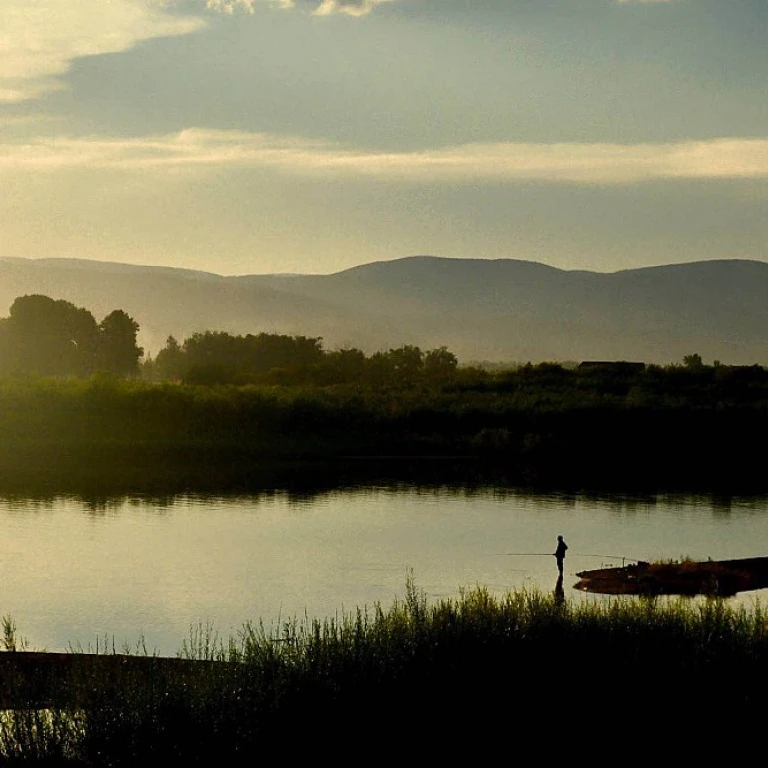




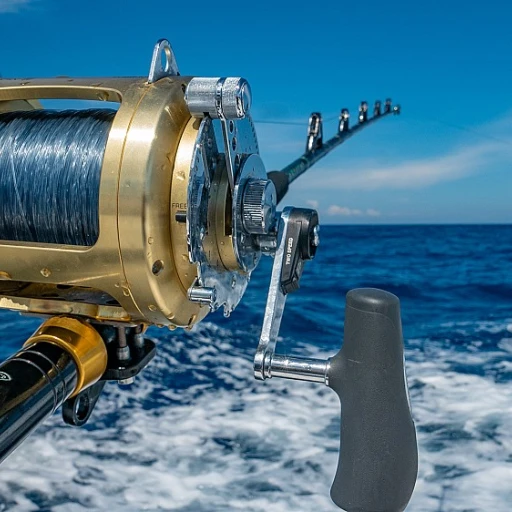
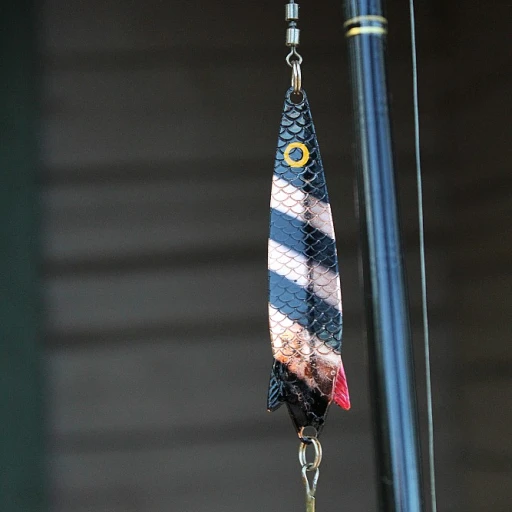

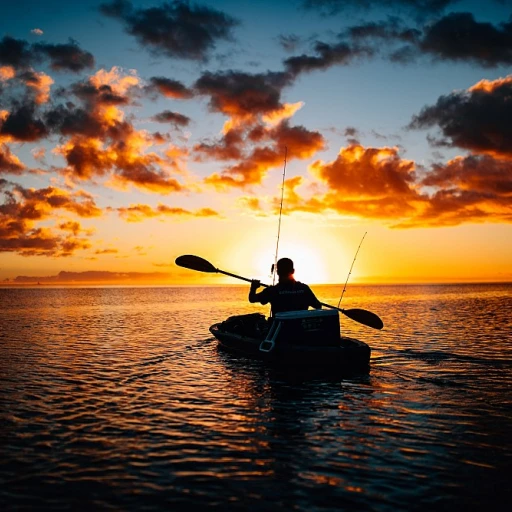
-large-teaser.webp)
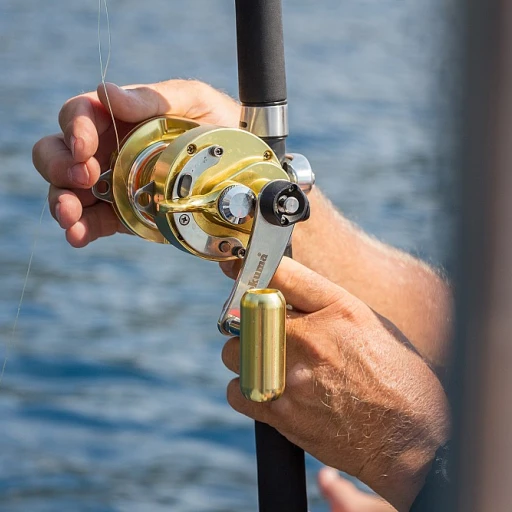

-large-teaser.webp)